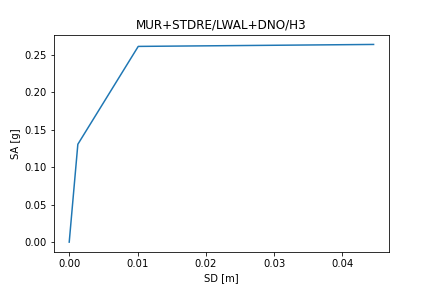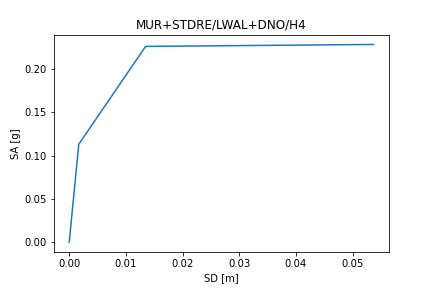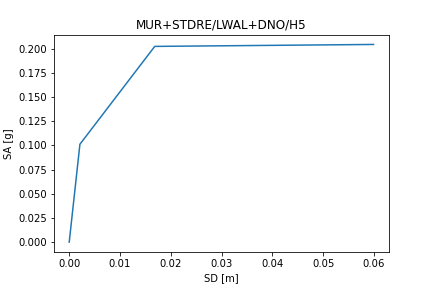Unreinforced masonry dressed stone#
General description#
Dressed stone GEM taxonomy: MUR+STDRE/LWAL+DNO/H1:5 Description: Unreinforced masonry buildings usually have solid irregular or tailored bricks made of limestone and granite, and in most cases with lime-sand mortar irregular bed joints. Although dry-joined masonry walls can also be found, these represent a small portion of the building stock and are frequently associated with monuments or cultural heritage. The most common type of foundation consists of a wider extension of the masonry walls in the soil, usually constructed with poorer quality materials. The roofs are usually composed of a wooden structure covered by clay tiles.

Capacity parameters#
Building class |
Yield drift [%] |
Ultimate drift [%] |
Ty [s]=f(Height [m]) |
Yield period [s] |
|---|---|---|---|---|
MUR+STDRE/LWAL+DNO/H1 |
0.16 |
0.8500000000000001 |
0.08*H^0.75 |
0.17316435935544378 |
MUR+STDRE/LWAL+DNO/H2 |
0.16 |
0.8500000000000001 |
0.08*H^0.75 |
0.2912265780633974 |
MUR+STDRE/LWAL+DNO/H3 |
0.16 |
0.8500000000000001 |
0.08*H^0.75 |
0.39472937916378714 |
MUR+STDRE/LWAL+DNO/H4 |
0.16 |
0.8500000000000001 |
0.08*H^0.75 |
0.4897827710402339 |
MUR+STDRE/LWAL+DNO/H5 |
0.16 |
0.8500000000000001 |
0.08*H^0.75 |
0.579009932432031 |
Capacity plots#





References#
A list of references and respective capacity parameters consulted during the definition of GEM’s capacity curves is presented below.
Reference |
URL |
Yield drift [%] |
Ult drift [%] |
Ty=f(H) [s] |
|---|---|---|---|---|
Villar-Vega et al 2017 |
https://doi.org/10.1193/010716EQS005M |
0.15 |
0.65 |
0.082*H^0.75 |
Borzi et al 2008 |
https://doi.org/10.1080/15583050701828178 |
0.13 |
0.61 |
- |
Lang et al 2018 |
https://doi.org/10.1016/j.jobe.2017.11.022 |
0.12-0.24 |
0.4-0.86 |
- |
Barbat et al 2006 |
https://doi.org/10.1111/j.1467-8667.2006.00450.x |
0.03-0.04 |
0.11-0.17 |
- |

